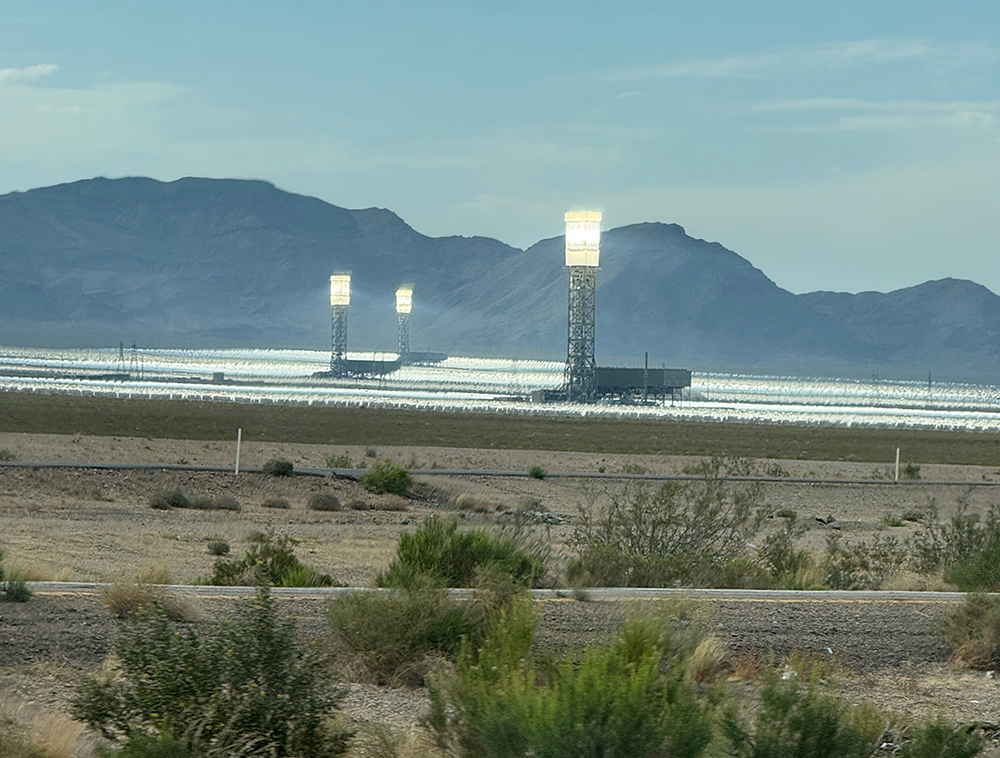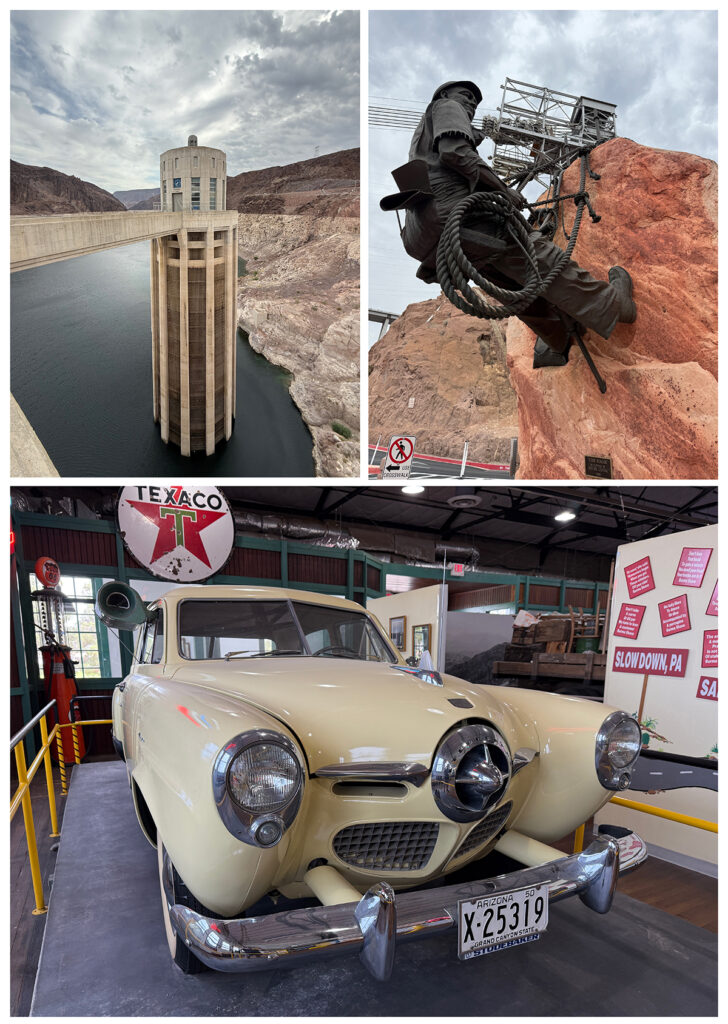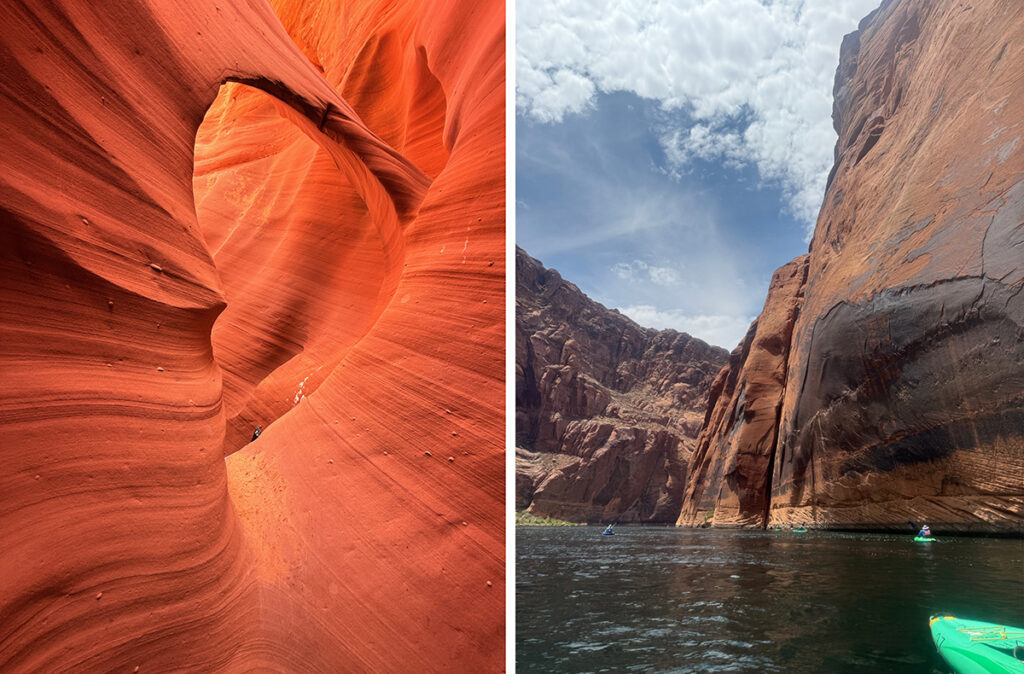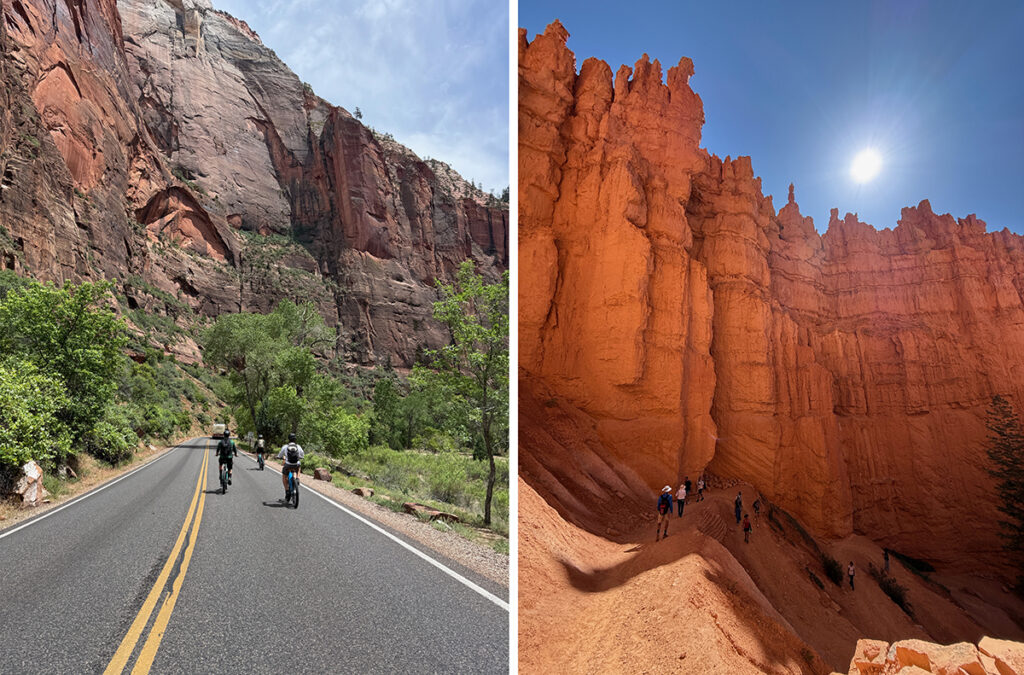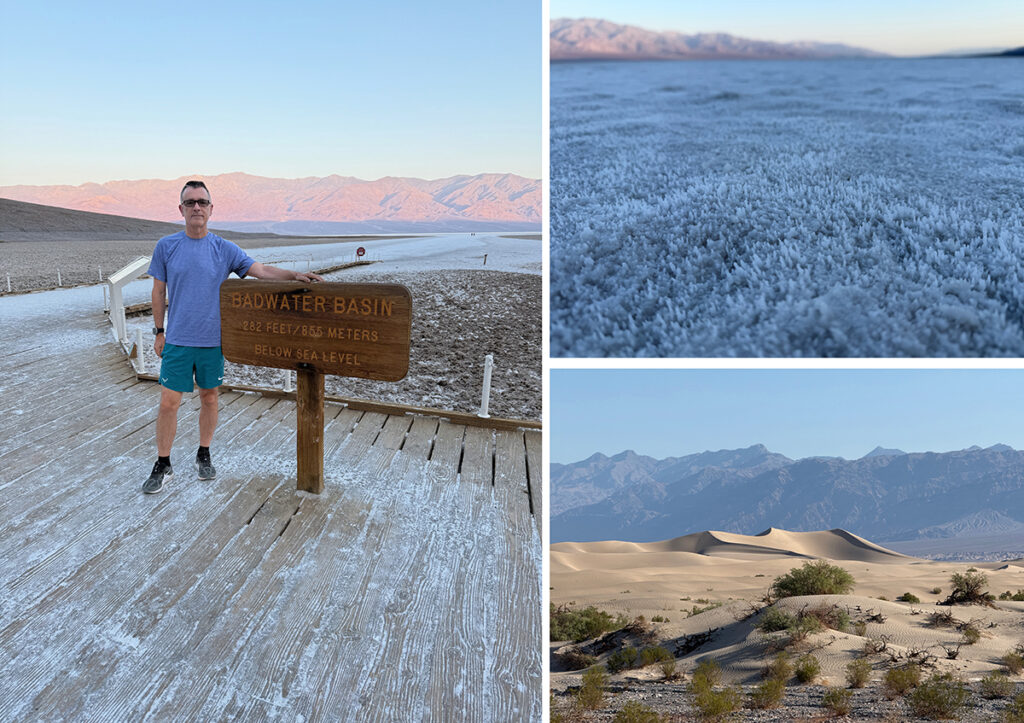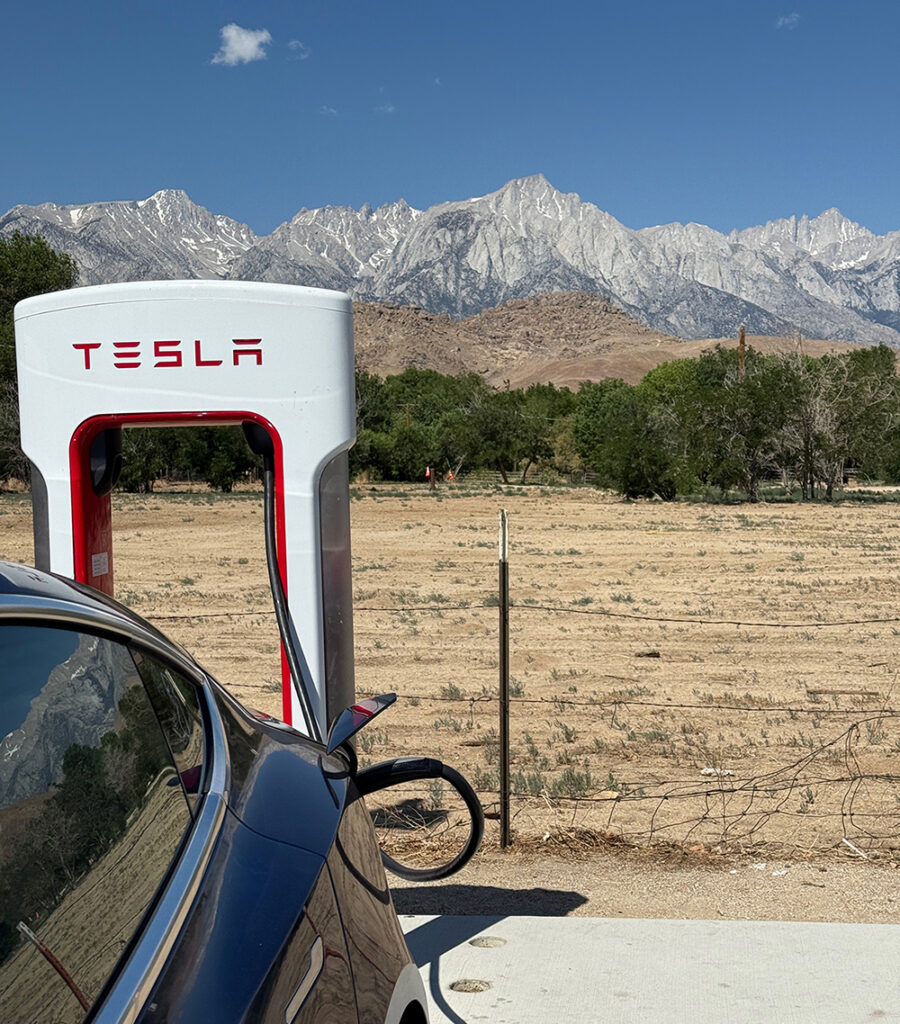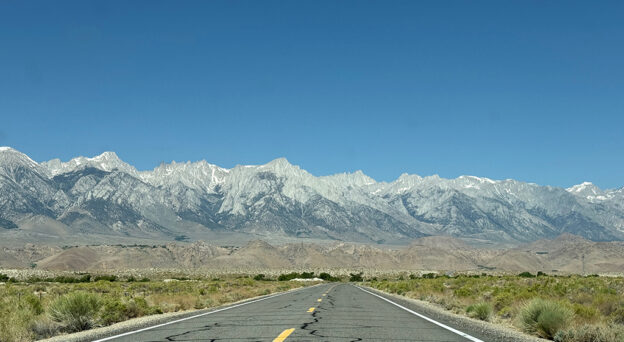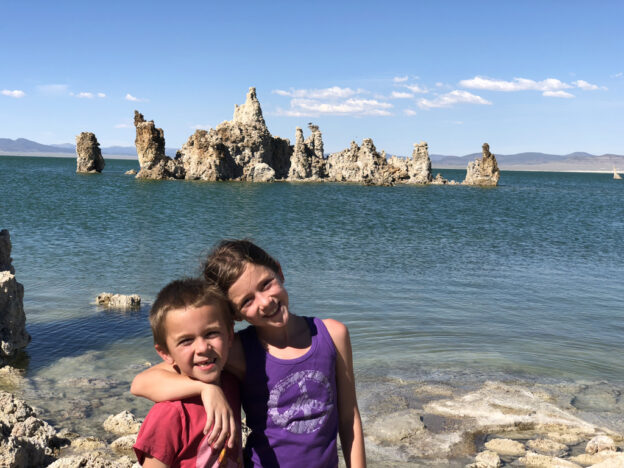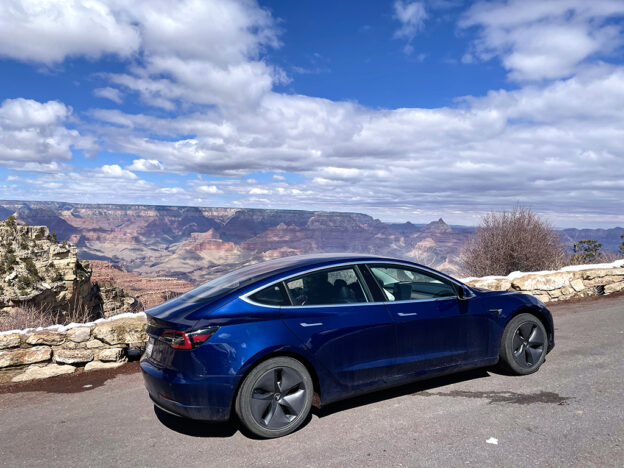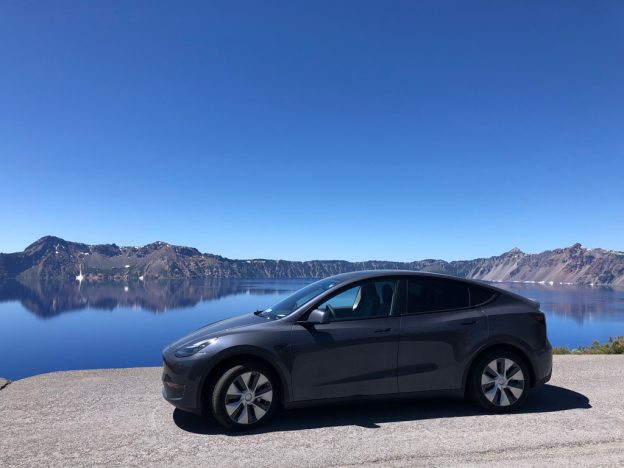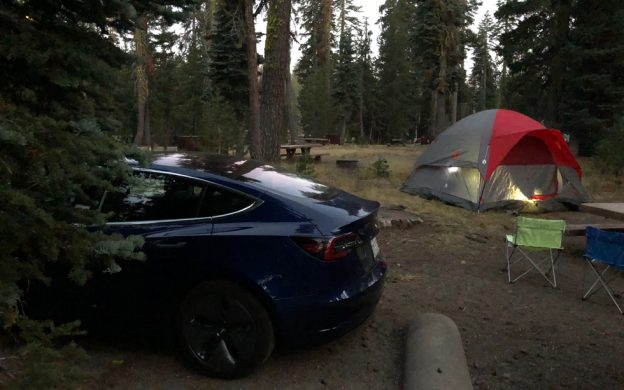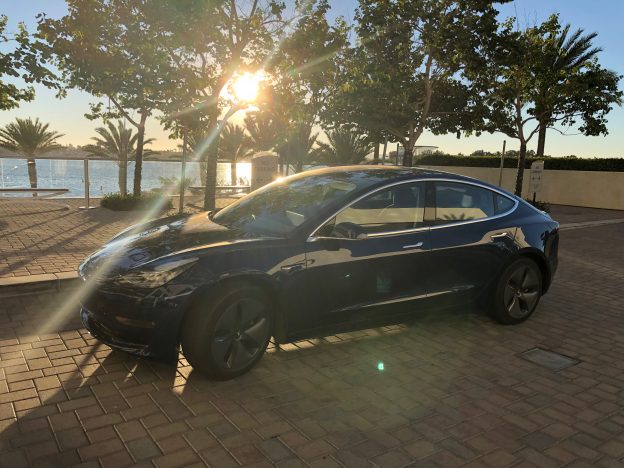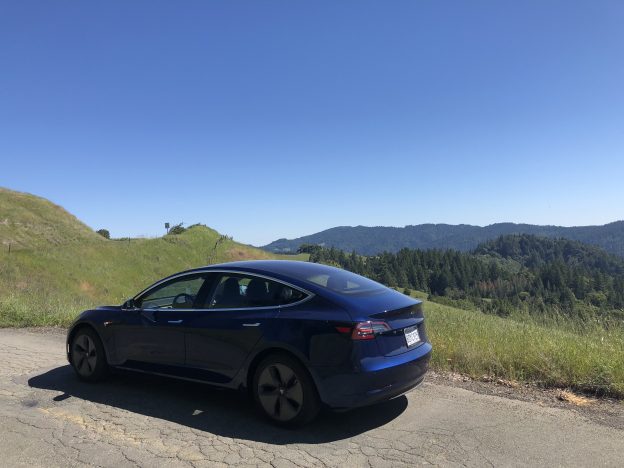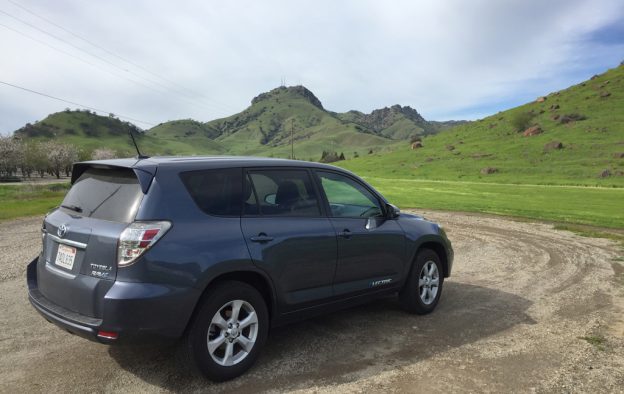June 2025. American Southwest.
This spring I reached 7 years in my Model 3 and celebrated the occasion with a road trip to visit National Parks and landmarks in the American Southwest. I’ve gone on similar trips when the car was new, and several times a year I go on regional trips that require a supercharging stop. But now I was approaching 100,000 miles on the odometer and wanted to know how well the car would handle a longer trip. Would I still get fast DC charging speeds while driving hundreds of miles and supercharging 2 or 3 times per day? Would I have to wait in line to charge since more cars use Tesla’s charging network now? Would newer charging stations be in good locations? And what about that electric cooler I picked up, would it drain my battery? (spoiler alert: No). My goal was to Combine an EV road trip with meeting friends from the east coast, spending time in the great outdoors, and testing how well my 7-year-old EV would handle the trip.
The Car
2018 Model 3, RWD, 18″ wheels. Rated range with a full charge is about 285 miles (I haven’t done a full charge to test that). The odometer is at 100,000 miles.
The Trip
Visiting National Parks to Celebrate Birthdays. This was a milestone birthday celebration with a group of friends to hike, bike, and kayak in the Grand Canyon, Zion, Bryce Canyon, the Colorado River, and slot canyons near Page. My east coast friends flew in to Phoenix and drove to the Grand Canyon. One of my friends drove with me from the Sacramento area and we stopped at a few National Parks and landmarks along the way. We took turns driving and my friend served as DJ. Somehow I’d missed the whole Yatch Rock thing and it set the perfect vibe for this road trip. Also, Ray Parker Jr. and Raydio – 2 thumbs up.
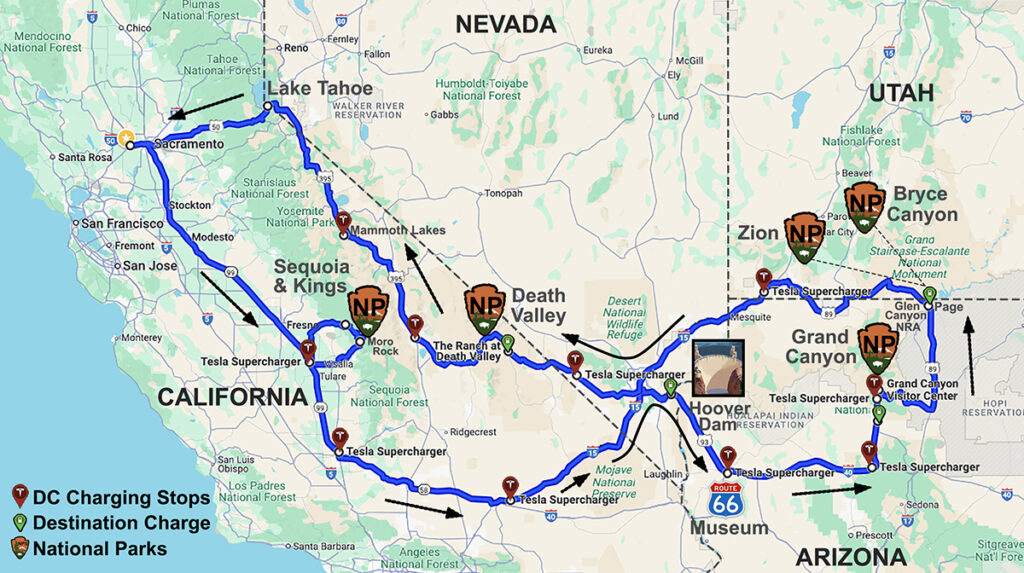
National Parks and Landmarks Visited
We stopped at Sequoia & Kings Canyon National Park to check out Moro Rock and giant sequoias; the Hoover Dam; the Route 66 Museum in Kingman; hiked in the Grand Canyon; kayaked on the Colorado River in the Glen Canyon National Recreation Area; rented eBikes in Zion National Park; hiked in Bryce Canyon National Park; saw slot canyons near Page; checked the temperature in Death Valley (it was hot); and stopped at Mammoth Lakes, Mono Lake, and Lake Tahoe. It was a good trip.
Supercharging
Supercharging stops averaged 18 minutes for the whole trip. I supercharged 11 times at 10 locations and my car charged the same on this road trip as before. I noticed charging power over 220 kW, but didn’t stick around to check the highest charging speed.
I paid $163 for charging and averaged 148 miles between superchargers.
I didn’t have to wait in line for superchargers. The superchargers were busy but no waiting. I did see cars from different manufacturers at most stops and that was good to see. However, twice I saw a single car taking up 2 supercharger stalls because their charging port was on the opposite side of the car and that was the only way the driver could plug in. Luckily that didn’t prevent anyone else from charging at that time, but it will become a problem unless mfg’s establish a common standard for charging port location.

Energy Use
I used 581 kWh of electricity to drive 2,181 miles. The car reported using about 460 kWh for the trip (see odometer above under ‘Buddy Trip’). But that number represents only energy used from the battery pack. Getting those 460 kWh into the pack used more energy. Charging an EV involves converting AC to DC, which results in losses. Supercharger stations convert electricity to DC before sending it to an EV – a process that is about 92% efficient. As a result, 100 kWh of electricity are used for each 92 kWh sent to an EV. Level 2 conversion of AC to DC occurs in your car and is less efficient – about 85%. So 100 kWh are used for each 85 kWh stored in the pack. Level 1 charging is less efficient – about 70%. I recorded energy sent to my car on this trip from Supercharging, Level 2 charging, and Level 1 charging, and added charging losses to get a more accurate estimate of the total amount of energy used.
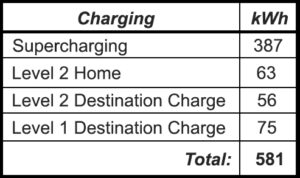
Two thirds of my energy came from supercharging. The rest came from my home and from Level 1 and 2 overnight destination charging at places we stayed.
Comparison: 1 gallon of gas contains the same amount of energy as 33.7 kWh of electricity. So using 581 kWh of electricity for this trip is like using 17 gallons of gas to drive 2,100 miles (that’s like getting 125 MPG).
Emissions
Charging my car produced 344 lbs of CO2 emissions. Where you charge on a multi-state road trip impacts total emissions since each state utilizes a different mix of fossil fuel and renewable power plants for their grid. I kept track of how much electricity I got from charging in each state and looked up CO2 emissions from generating electricity in those states. The Department of Energy’s Energy Information Administration publishes this data as pounds of CO2 emissions released per MWh of electricity generated in each state. The EIA lists the data by state, by year, and includes other emissions produced by electricity generation like sulfur dioxide and nitrogen oxide. I focused on CO2 since it is a potent heat trapping gas, and is useful for comparing EV emissions with those from gas powered cars.

In summary, I drove 2,181 miles and used 581 kWh of electricity. Generating electricity in California, Arizona, Nevada, and Utah to charge my car released 344 lbs of CO2.
How Does This Compare to a Gas Powered Car?
The average 25 MPG car produces 5 times more CO2 than my EV. Calculating emissions from gas powered cars is much simpler. Burning one gallon of gas releases 19.6 lbs of CO2. So it’s just miles driven and gallons of gas burned. The average car in the US gets 25 MPG. So a 25 MPG car traveling 2,181 miles would burn 87 gallons of gas and release 1,710 lbs of CO2 into the atmosphere – 5X more than my EV. I also calculated emissions from more efficient cars and larger less efficient SUVs that are very popular (see below).
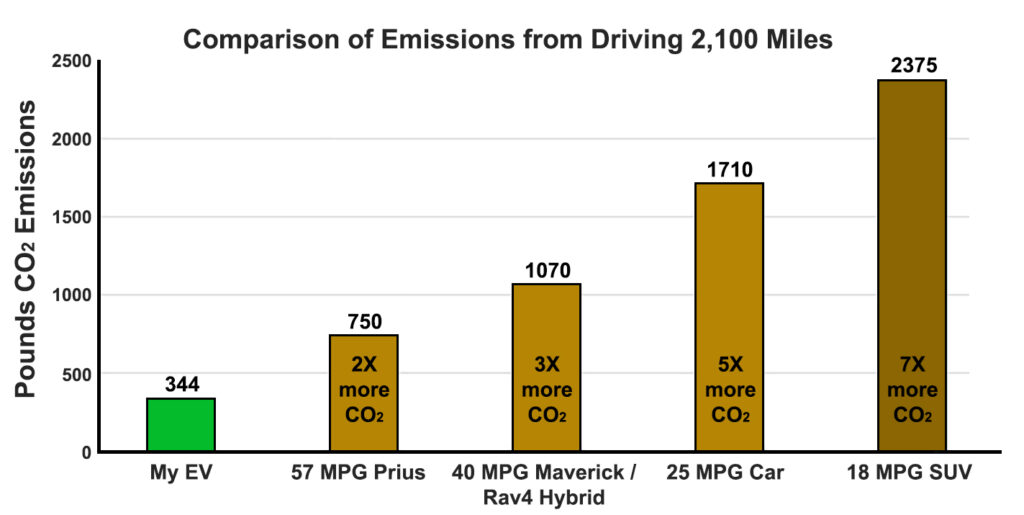
Why is This Important?
Transportation accounts for nearly 1/3 of carbon emissions in the US. There’s about 300 million vehicles on the road in the US, and hundreds of millions more around the globe. The average person drives about 13,000 miles per year in a car that gets 25 MPG in the US. New sedans are more efficient, but pickup trucks and SUV are the most popular vehicles on the road and these vehicles lag behind in efficiency. Even with improved efficiency for gas burners, EVs are much better for daily driving, road trips, and over their full life cycle.
My EV makes less pollution today than it did 7 years ago because the electric grid gets cleaner year by year. That doesn’t happen with gas powered cars – a car that gets 25 MPG today will get 25 MPG 7 years from now.
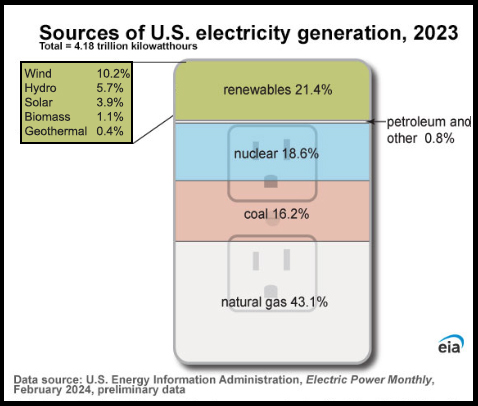
The average gas-powered car in the US releases over 200 lbs of CO2 into the atmosphere every week. Multiple that by the millions of vehicles on the road, every day, all year long, and those emissions add up quickly to 35 billion tons of CO2 each year – and that CO2 stays in the atmosphere for decades. This man-made process is dramatically increasing the level of CO2 in our atmosphere.
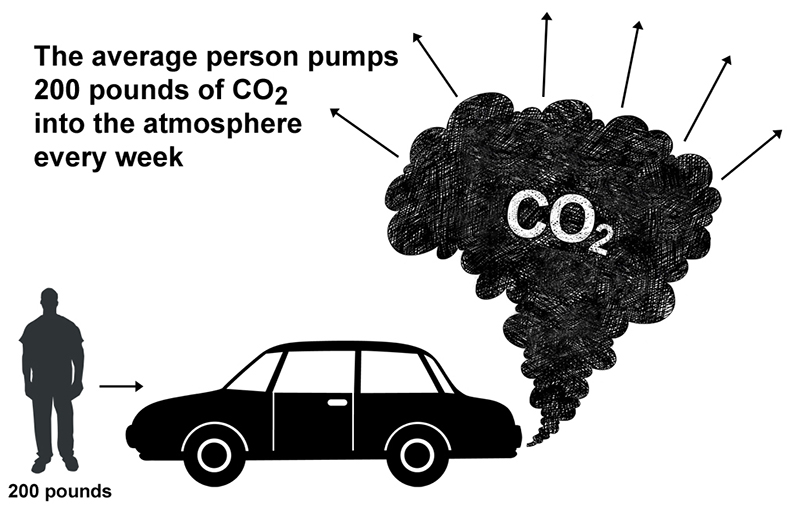
We pump fossil fuels out of the earth and transfer that carbon into the atmosphere. Our current mode of transportation consists of pumping fossil fuels out of the earth and burning them. This takes carbon that was stored in the earth over a period of millions of years and rapidly transfers it to the atmosphere through a 100% man-made process. I hear from skeptics that the climate has always changed – that the earth has gone through ice ages and warm phases in the past, and now is no different. They conclude that thinking, worrying, or trying to do anything about greenhouse gas emissions is unnecessary. However, previous climate change events were caused by natural events, think prolonged volcanic activity for example because Neanderthals didn’t drive SUVs. Those climate changes brought drastic consequences including species extinctions that are best avoided.
Climate change can be avoided. Burning fossil fuels on a large scale tips the balance of the earth’s atmosphere and ecosystems, and it is entirely under our control. More sustainable solutions are available and worth developing. The good news is that the US grid has been improving:
Thoughts on EVs from my Friend
The friend who drove along with me does not have or plan to get an EV. We took turns driving but didn’t talk much about my car during the trip – except for those WTF moments when phantom braking reared its ugly head. He spun up good tunes, enjoyed the landscapes, and observed. At the end of the trip I asked for his thoughts, the pros and cons. Here’s his report:
| Pros: Pleasantly surprised by how quick the car charged at the Superchargers, by the easy access to chargers along major routes, the location of chargers, amenities, and by not having to wait for charging. Cons: Cruise control was terrible. I’ve had TACC in my past 3 cars and never had a problem with it. The phantom braking is a safety issue and it was annoying as heck. |
Conclusion
There is nothing extraordinary about making this trip in an EV today. ‘Regular’ cars do this all the time, and that’s the point: EVs are just cars (that produce fewer emissions). My EV has held up well. It’s reliable, takes care of commuting, chores, family outings, and takes me places I like to go while greatly reducing emissions. If you haven’t considered an EV yet, there are a lot of options for 300 mile EVs on the US market from Chevy, Ford, Hyundai, Kia, Nissan, Toyota, Tesla, VW (and more expensive models from Audi, BMW, Cadillac, Lucid, Mercedes, Polestar, Porsche, Rivian, and Volvo). My advice? Check it out.
Finally, I like sharing pics so I’ll end the post with a couple highlights from the trip:

